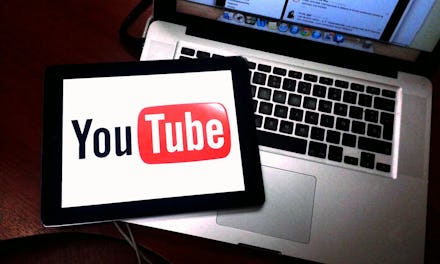LGBTQ+ content is being restricted on YouTube. Queer youth need these videos to survive.

This week, LGBTQ YouTube stars spoke out against the video-hosting site after news broke that the site restricted access to videos containing LGBTQ content, even if the content was innocuous. This "restricted mode" meant that users under 18 would not be able to view these videos in certain institutions.
Bloggers like Rowan Ellis and Tyler Oakley spoke out against these restrictions on Twitter and even on YouTube itself. Oakley said he was "perplexed" as to why one of his videos, "8 Black LGBTQ+ Trailblazers Who Inspire Me," had been blocked.
Many of the videos that were restricted merely contained the words "lesbian," "gay" or "bisexual" in the title, but contained nothing that should raise an eyebrow.
One YouTuber, NeonFiona, told Gizmodo that her video "An Honest Chat About Being Single" remained available for anyone to browse, even though it contained frank discussions about sex, while her bi videos were banned.
"Kids who want to know about different orientations and definitions and about the history of LGBT people, etc, they can't access that when their videos are being restricted," NeonFiona said. "Restricting these videos makes it harder for these kids to find information they need and the community that they've been missing."
LGBTQ content creators fill a specific role that many queer youth sorely need. Unlike their cisgender or heterosexual counterparts, queer kids are usually raised in families where their parents' sexual orientation or gender identity does not match their own.
As David Halperin writes in his (admittedly cisgender gay male-centric) How to Be Gay, queer people teach each other how to be queer. YouTube fostered face-to-face interactions between hundreds of thousands of queer people, who looked to the platforms' queer content for life advice, experience and to see themselves reflected.
And statistics show that queer youth are using the internet to foster life-saving connections and to find information about their identities.
According to a study from GLSEN, 62% of LGBT youth use the internet to find information about their sexuality — that's five times more than straight youth. Overall, LGBT youth were more likely to seek out health information online than straight youth — 81% to 46%.
Transgender youth in particular used the internet to seek out medical and health information. Trans people like Jaime Raines and Ashton Colby used the medium as a way to share stories of their medical transitions.
Though the bisexual community comprises a majority of the LGBTQ community, bisexual erasure means narratives about the queer experience often sideline bisexual narratives. As NeonFiona's case shows, bisexual content creators on YouTube act as a necessary resource for bisexual youth.
The chasm between queer youth and the availability of media that reflects their experiences remains too wide. In 2016, LGBT-themed books dominated the list of books banned in libraries nationwide. YouTube's simple promise of access to LGBTQ content anywhere a student could fire up a modem was doing the work that even our nation's libraries could not. Like oral histories, YouTube videos were ways that queer people could share knowledge and wisdom with each other.
Queer people have always used technology to find each other in a heterosexual world. In the 1700s, queer people used coded language to find each other in newspaper personal ads when homosexuality was still punishable by death. One 1994 list of the top 10 chat rooms on the internet included three chat rooms entirely dedicated to queer men finding one another.
YouTube is certainly not the only option LGBTQ youth have when it comes to representation. This is an age in which Moonlight wins best picture and entire posts are dedicated to helping you find the perfect genderqueer or lesbian Tumblr to suit your interests. But when too few outlets still exist, taking one away is a step in the wrong direction.